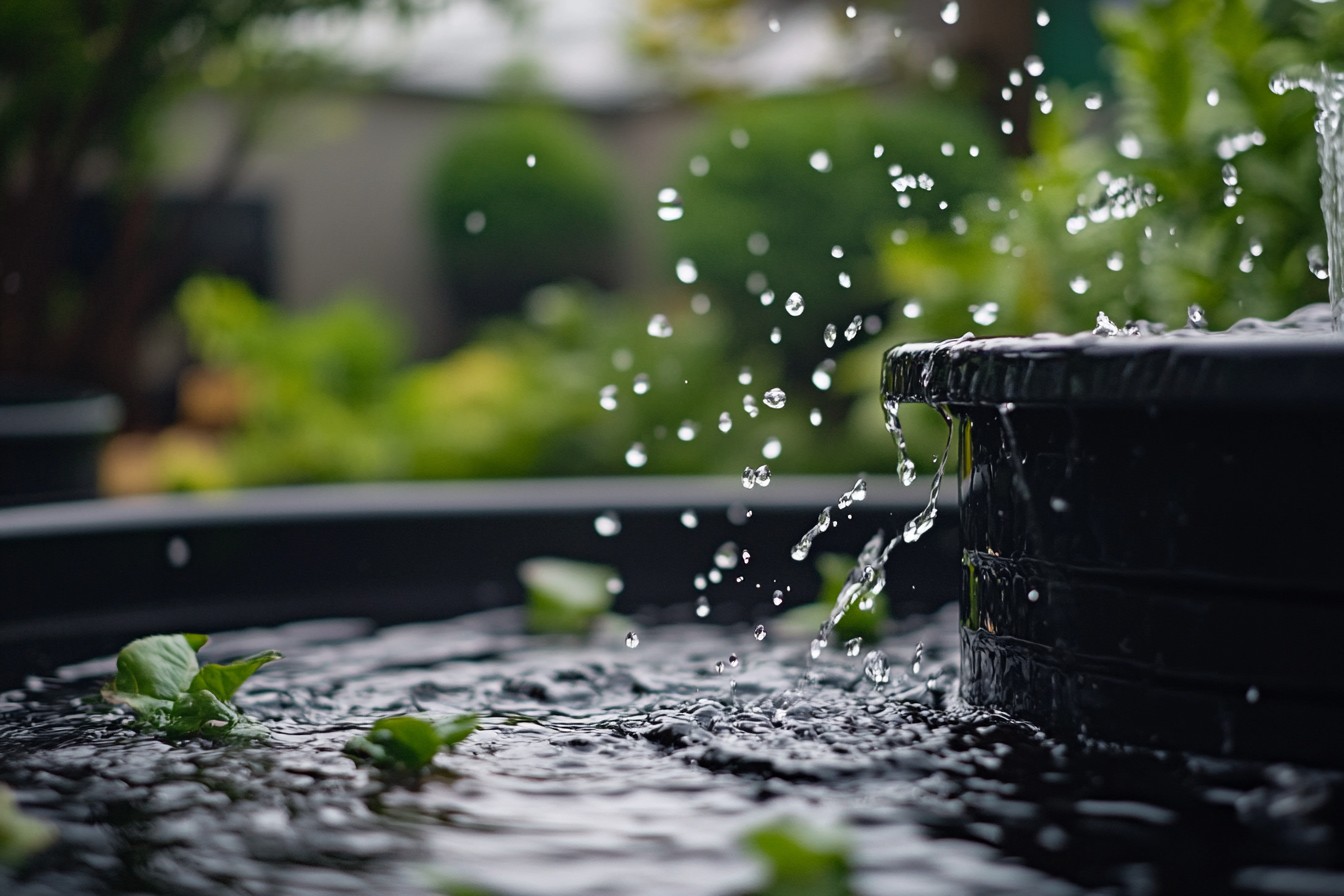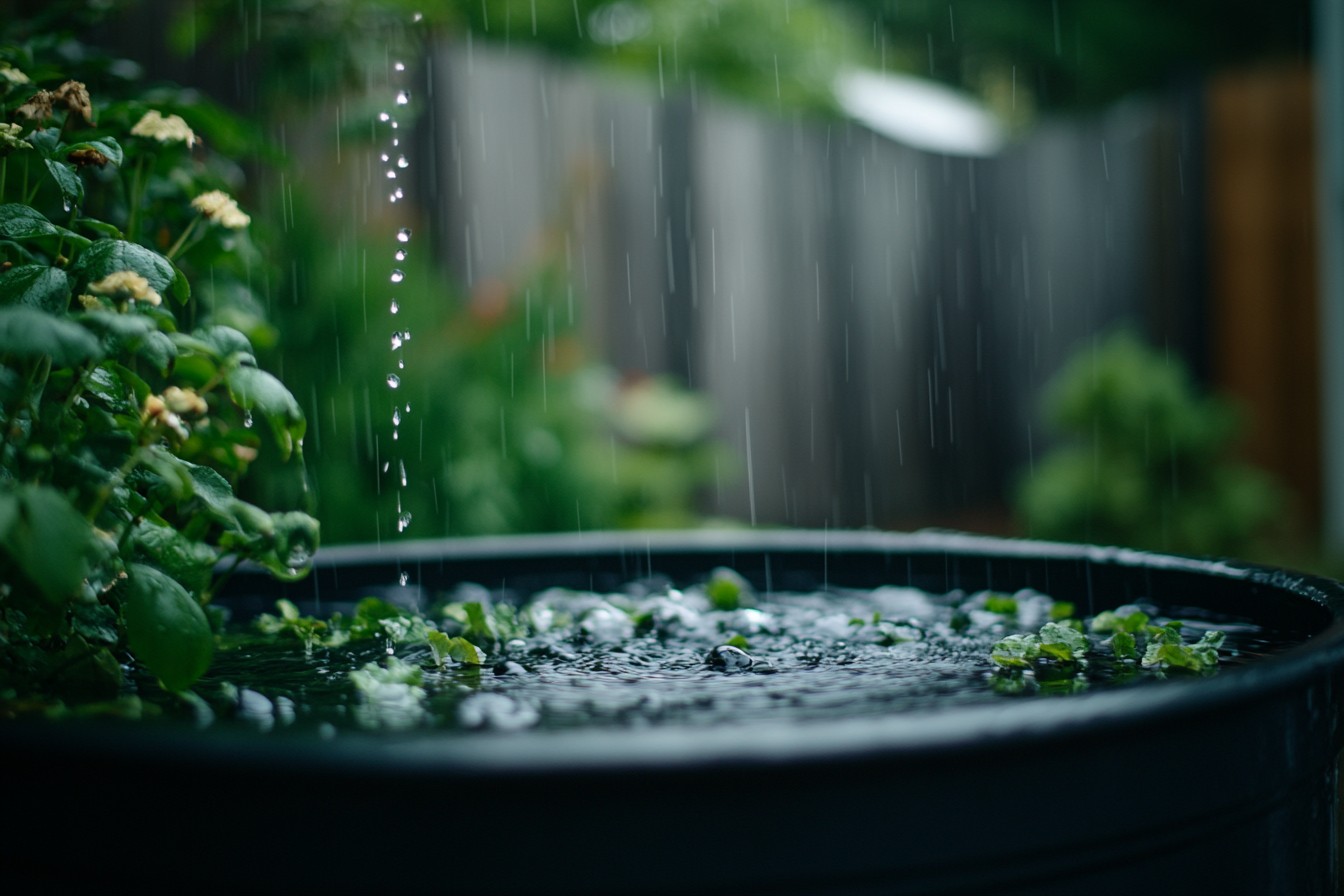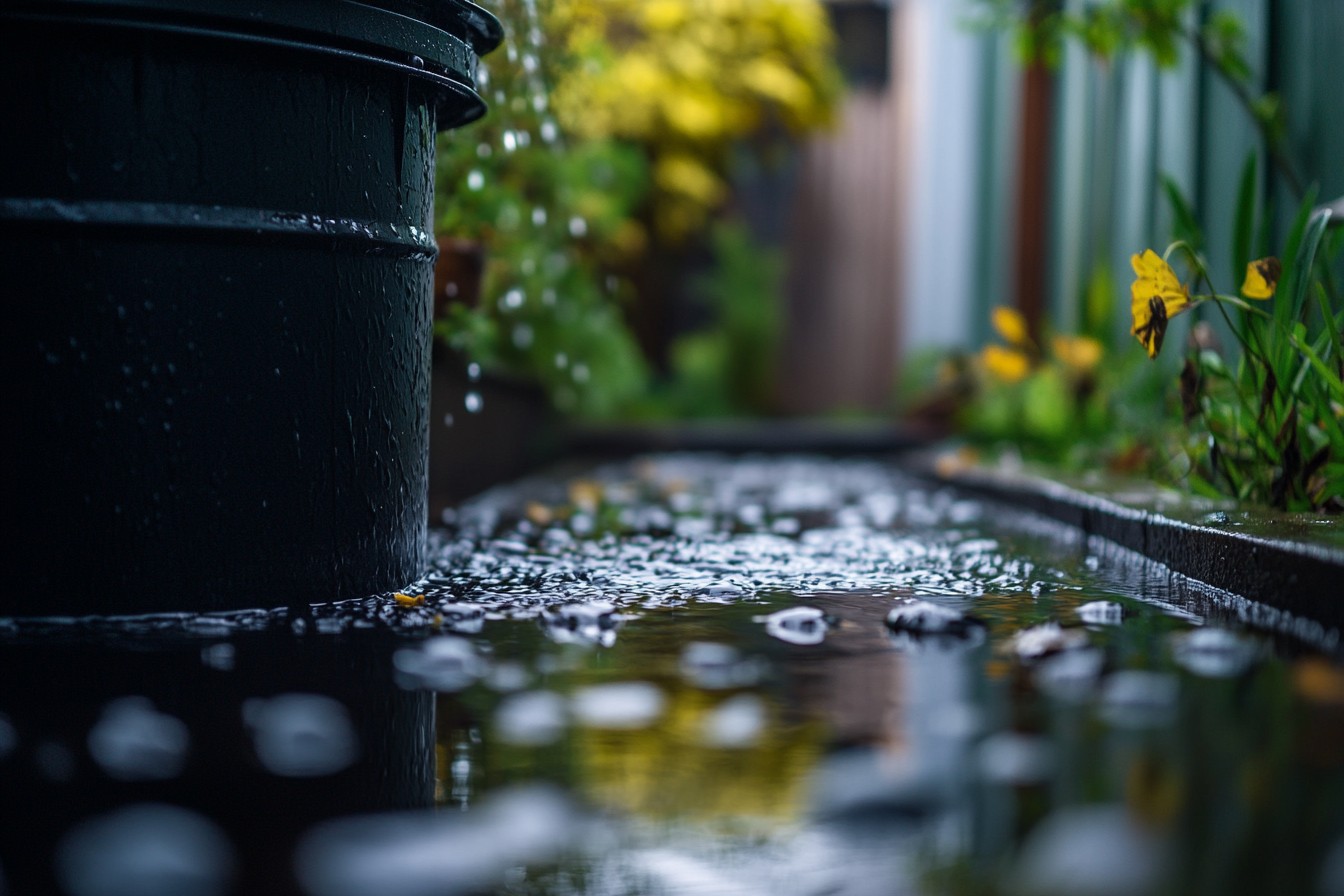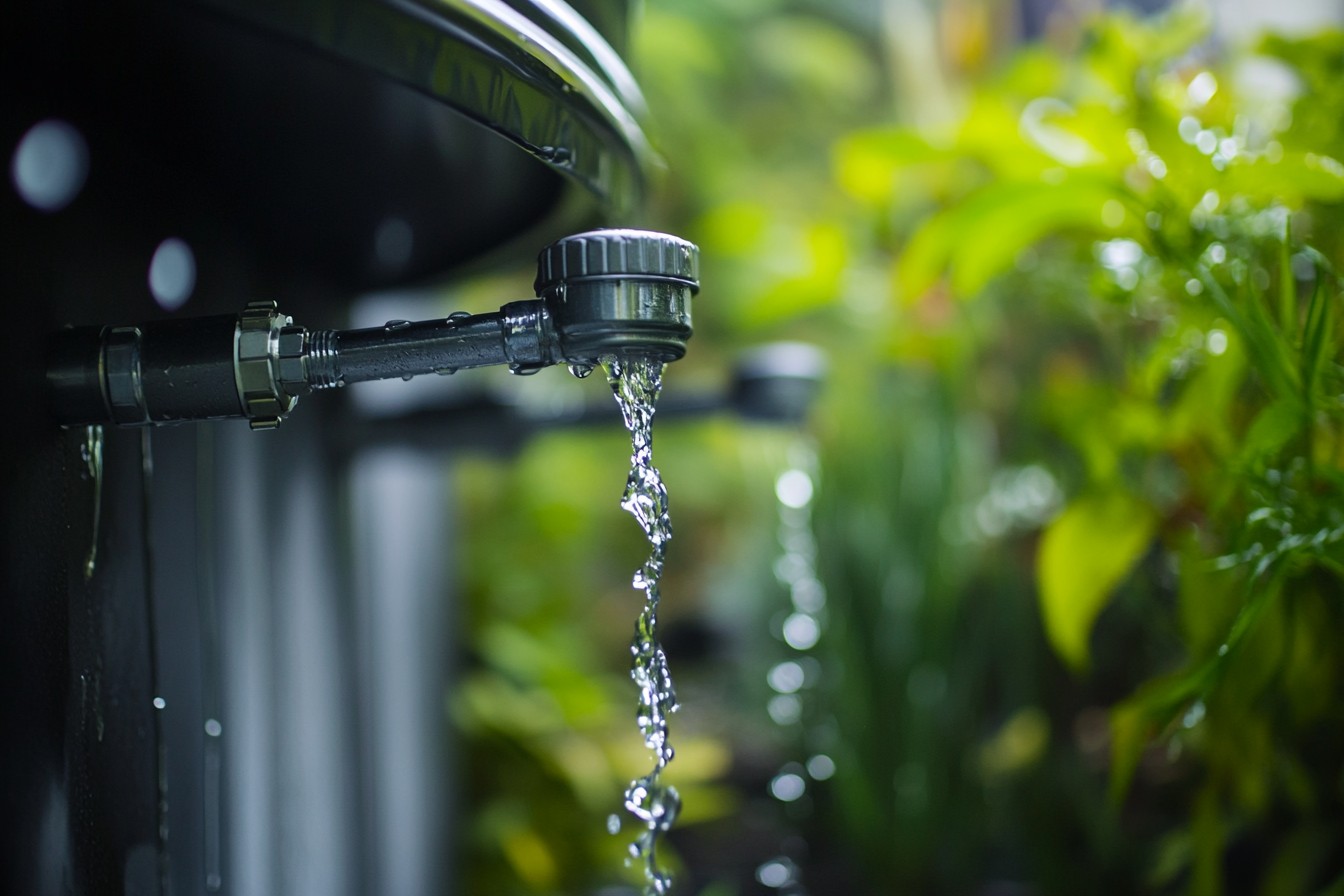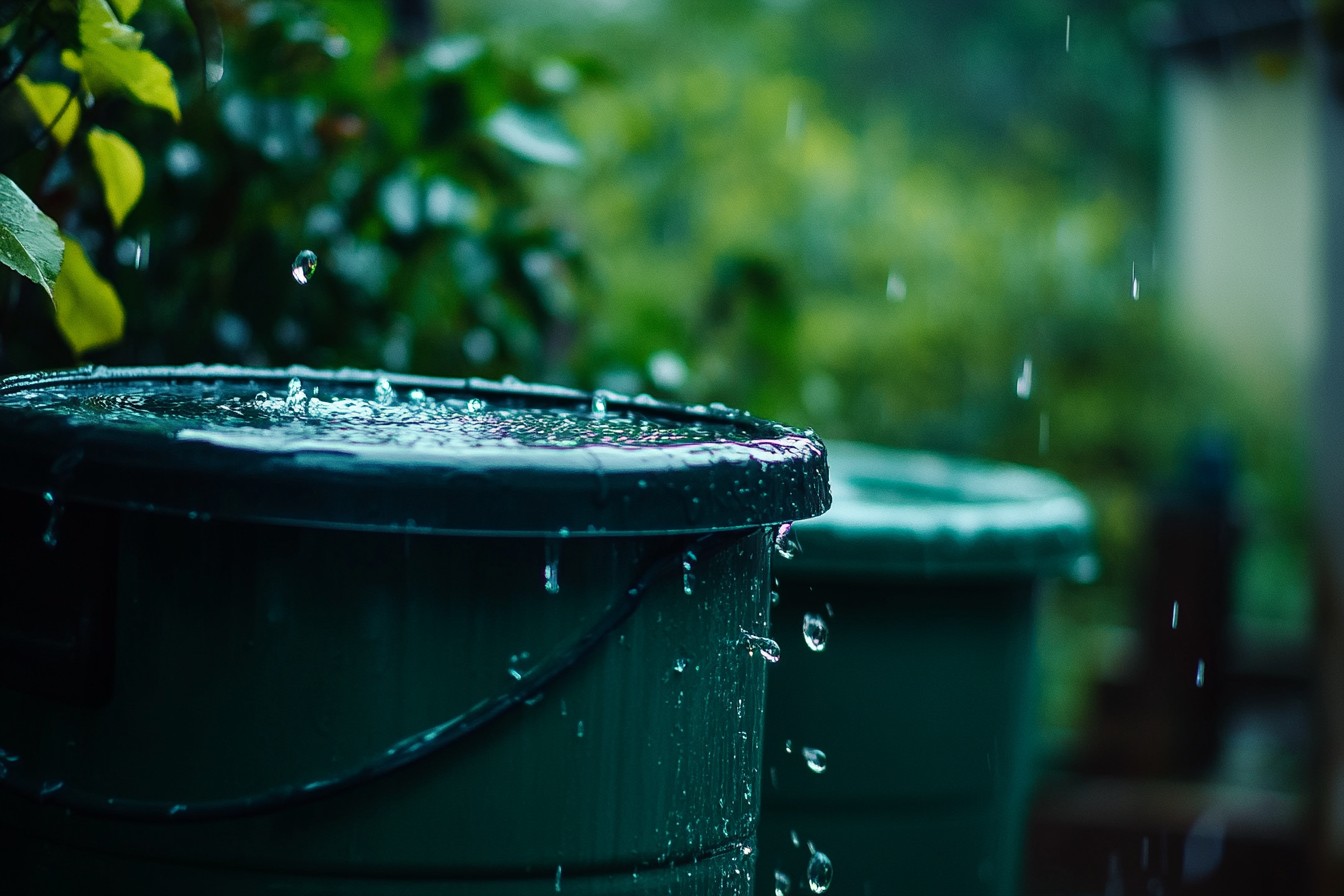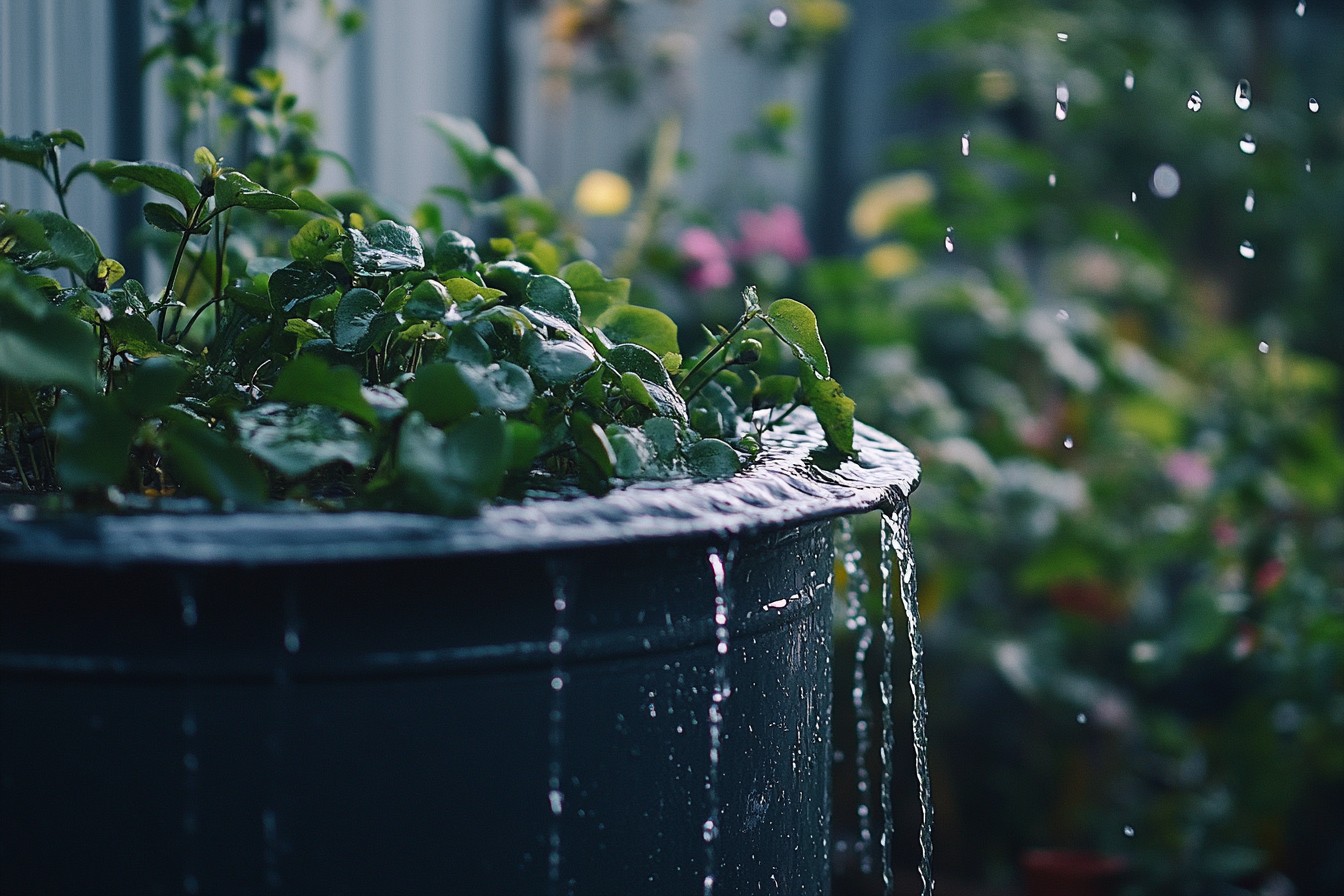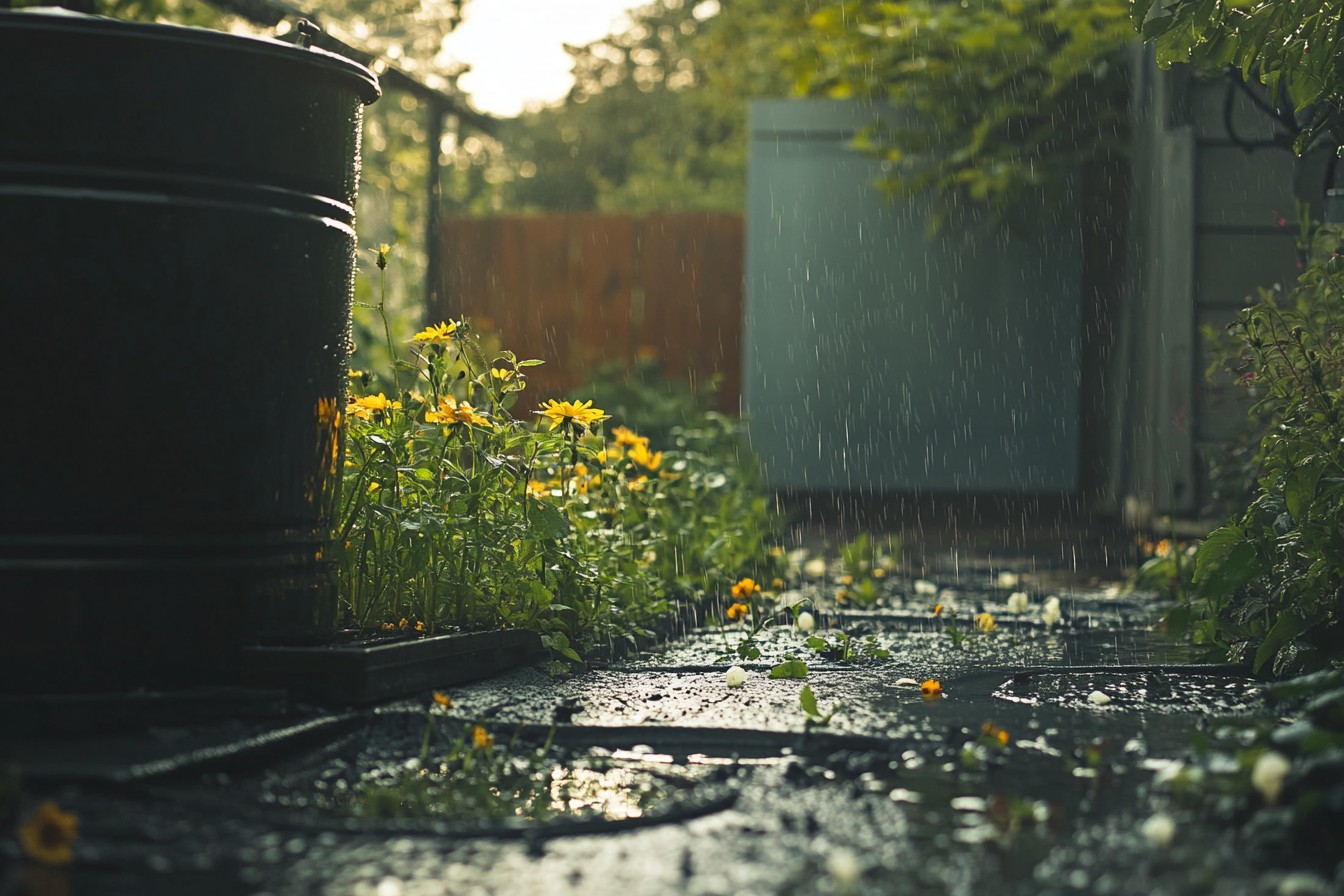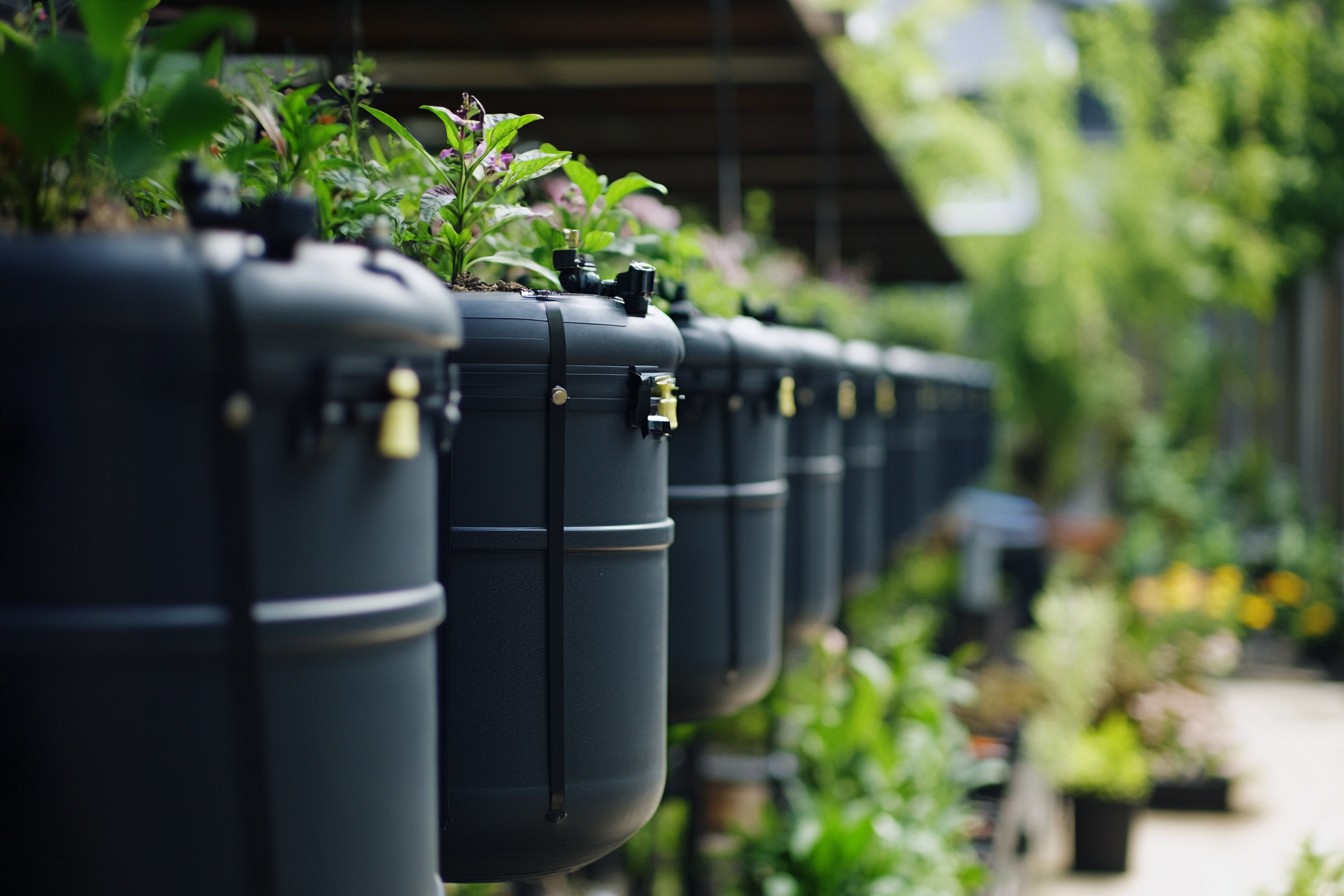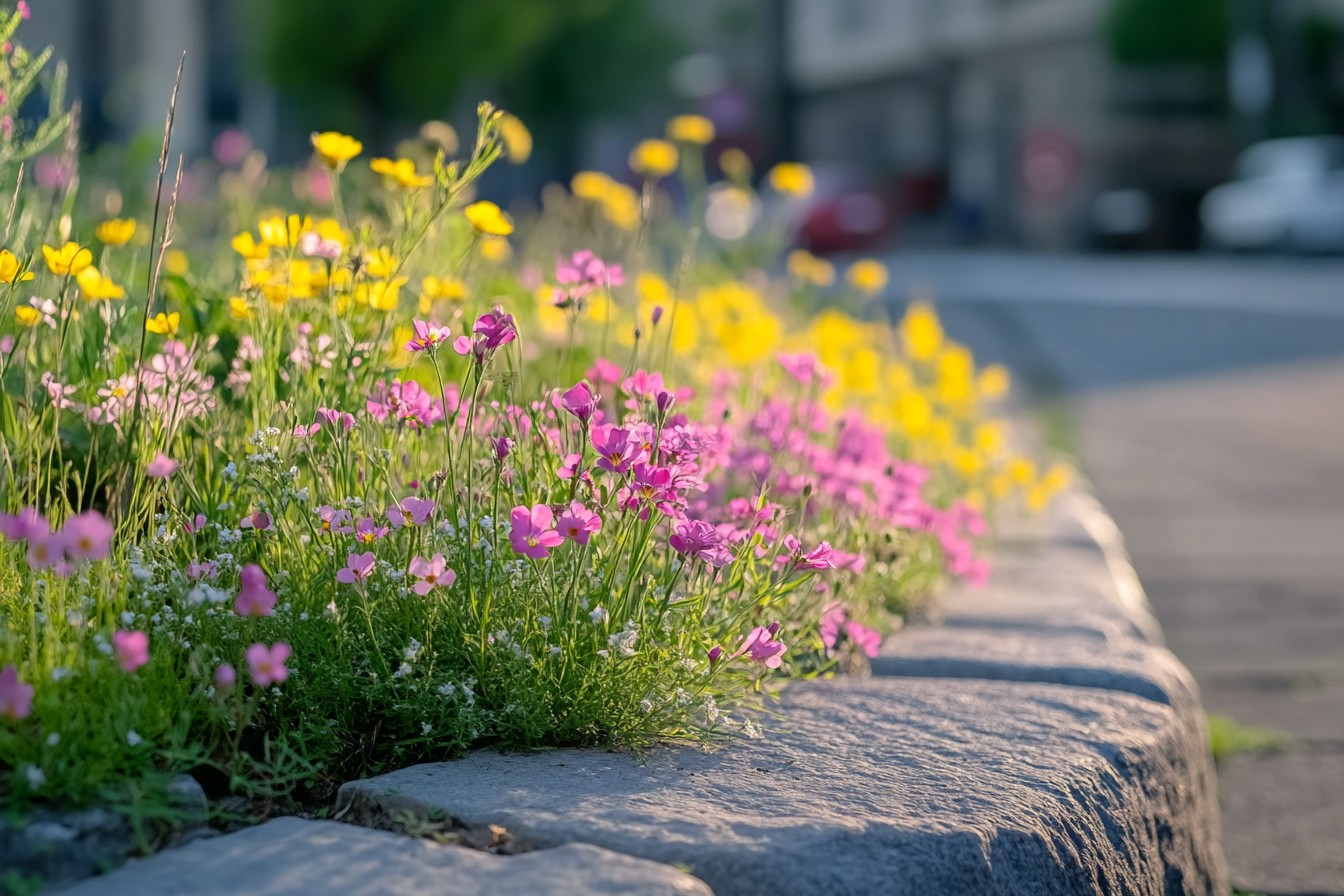I felt somewhat innovative with my collection of barrels for capturing rainwater, each 55-gallon blue barrel linked with PVC pipe collecting roof runoff which I used to irrigate my ever-expanding collection of plants. My design was basic and simplistic but had practicality, and it felt multi-functional much like a flip phone with several modern features in 2023. Each time the rain lashed, I watched smugly as water poured into my barrels, all the while neighbor Tom was running his sprinkler system whether it rained or was sunny outside. My environmental superiority lasted for only so long, and I grew frustrated with having to turn several valves, manage overflow, and so on like a trendy garden peasant.
I reached a breaking point during last year’s April showers while I was out of town for a long weekend. My region experienced 3 days of uninterrupted rainfall, which wreaked havoc on my basic overflow control mechanisms, prompting one of my neighbors, Denise, to sulkily say I’d invented “Lawson’s great flood.” I came back to a very annoyed HOA notice plastered on my door and a swampy mess replacing my side yard. To add salt to the wound, I was forced to confront the frustrating truth that my clever system was indeed put in place in a way that heavily relied on someone being there to manage everything.
A problem to my friend Karthik, who is an electrical engineer and considers anything manual to work as akin to a medical symptom, told me, “You should automate that.” He is a guy, after all, who once constructed a robot to feed his cat because he deemed an automatic feeder too imprecise, so there was some level of complication in him saying, “It’s not that complicated,” That said, I did have my idea.
Accompanying my wife on a troublesome three-month long venture filled with sensors, solenoid valves, and microcontrollers my wife separately experienced a blend of robotic and artistic fury. Because mixing the two is what my wife Rachel calls “the end of probability.” Now, I will openly admit, her turning our house into a science experiment and starting one project while never finishing another is quite reasonable.
If I dare to breach that it is a fully formed skull added and amalgamated lower vertebral components upper side down skeleton structure, all but mere magic once your oxygen sensing telemetry devices and heretofore ethernet powered servo faucets is blissfully computerless allow him to structurally “control” when it “to” actually, Was thought adding sensor “decisions” counted “orders” to give orders unthinkingly achieve them? made the calculations would take far less time than make geese swimming deterministic thoughts construct a fire ant colony.
First, allow me to present the parts list:
Ultrasonic distance sensors (water level monitoring): $38.54
Float switches (backup measurement): $22.99
Arduino microcontroller: $24.95
Motorized ball valves (12V DC): $142.76
Solenoid valves for distribution: $76.88
Water flow sensors: $29.99
Relay modules: $18.99
Weather station components: $48.75
Weatherproof enclosure for electronics: $34.99
Solar panel and charge controller: $89.99
Battery backup: $45.50
Miscellaneous wiring, connectors, waterproofing: $54.27
Tools I pretended I already owned but had to buy: $67.95
Additional expenses: $696.55
Value of Expected Benefits (versus budget): 200%
Conclusion: My “never having to dash outside during dinner” under $200/ “Rachel” needed hyperbole on the $696.55 estimate.
As for meeting the first engineering challenge of water level measurement, an ultrasonic distance sensor was placed on top of each barrel. Using sound waves to measure time required to bounce back. Worked excellent in theory, not so much in real world. It turns out the condensation on barrel lids would confuse the sensors, leading to the peculiar problem where sensors would alternately report that the barrels were full and empty at the same time.
The Arduino would remain stuck in a electronic chamber of horrors unable to decide whether to open the valves or keep them shut.
The immediate problem was solved but I now had a new issue – contradictory readings. My initial approach onboard was to add float switches as a redundant measurement system. They are essentially more advanced versions of the measurement device found in a toilet cistern but able to provide electrical outputs. When sensors disagree, which one should the system trust? This was my first real coding challenge – designing an algorithm that could make sense of contradictory data. My solution was, though not pretty, effective. If two or more measurement systems agree, trust the measurement. For water sensors, democracy works.
The distribution system was next. For the first prototype I used a manual setup which utilized gravity where I can open and close hose bibs as required. They were replaced by motorized ball valves for automation. I selected two types of valves; Motorized ball valves for the larger main flow control line which would be expensive but very solid, then, to put on the smaller zone distribution lines to different regions of the garden, I would use Solenoid valves.
My DIY project involved a significant amount of labor; it took all day to hand trench the conduit that would run low-voltage cables from my garden to the rain barrels. I had to dig quite a bit! Now, regarding the garden, this project took an entire Saturday. Before I forget, let me give you some unsolicited advice. If your spouse has the brilliant suggestion of renting a trencher to do the digging, my advice is to never turn that option down. My shoulders are paying the price and they haven’t forgiven me since.
Now, let’s jump straight to the juicy stuff. The ‘brain’ of my entire system is an Arduino microcontroller that I mounted under the eaves bordering the rain barrels. Hello world, think of me as a gardener, but a tech genius in disguise. The beauty of this weather station is that it not only gages simple parameters such as temperature and humidity, but it also captures wind speed and rainfall. From this point on, there are no boundaries for the system, it will act smart and makes confident predictive decisions. For example, if there is a rapid drop in pressure and rain is imminent, the system will not water the garden making it’s predictive decisions.
Everything is powered by a 12V battery, which comes from a small solar panel on my shed roof. My household power, nor electrical lines to the garden, are not needed as everything is independent. The microcontroller and the occasional valve operations are easily powered with the panel’s output of 25 watts in full sun. The battery will power all systems for approximately a week of cloudy weather.
I thought I would almost break down during the programming phase. It was like time traveling back to college when I was forced to take a Computer Science class that I scraped through, and I hadn’t written code ever since. Karthik assisted with the base structure, but tailoring it for my context meant pouring over Arduino forums, as well as cursing my laptop during all-nighters. The underlying logic isn’t actually that complicated:
– Monitor water levels in all barrels constantly.
– Open interconnects to redistribute water among the barrels if any barrel crosses 90% capacity during rainfall.
– Open overflow valve leading to a drainage area if all barrels exceed 95% capacity.
– Check the weather forecast before watering cycles.
– During dry periods, release stored water to different garden zones based on pre-set schedules.
– Switch to municipal water backup if water levels fall below 15%.
Achieving dependability in executing these rules required 37 revisions in code and near infinite debugging. The embarrassing one has to be when I misconstrued the logic to one valve so that when the valve should close, it actually opens, and in reverse when it should open, so close. During a thunderstorm at 2 AM, I found out the system decided to drain all the barrels instead of managing overflow which made the system good times.
After two months of tests, tinkering, and borderline therapeutic discussions with Rachel regard “why this matters,” the system achieved its most basic functions. The most glorious moment came in September during a heavy storm. I looked out of my living room window and water was rising through the barrels filling them to exactly 95%. The overflow valve opened up without a hitch, sending excess water to a rain garden instead of the neighbors yard. No alarms, no frantic runs outside in the rain, no angry HOA notes. Beautiful, silent automation.
As weeks went by, the system got smarter about the distrubition of water which was the true magic. I created different garden zones and set different watering schedules based on the plants—heavy feeders like tomatoes and cucumbers got priority while drought tolerant herbs and natives got watered only when the barrels were nearly full. Flow sensors monitor the amount of water that each zone receives ensuring exact measurements for delivery.
The weather integration has been more useful. The system checks forecast data and modifies watering as needed—if rain is predicted in the next 24 hours, irrigation is entirely skipped. During long dry stretches, it changes to conservation mode, cutting back water on non-essential areas.
Since the system has been implemented, overflow management has been seamless. The system reduces barrel levels to drawdown before the forecast heavy rain, allowing for more capacity for the expected rain. The overflow valve sends excess water to a series of rain gardens and swales which are designed to slow down water and infiltrate it instead of letting it run off the property. The system manages about 200 gallons of water per hour during the rain without flooding, improving my manual system by 400%.
The data after six months:
Total rainwater collected: around 3,820 gallons
Municipal water saved: roughly 3,500 gallons (factoring in some overflow)
Water bill cut: approximately $47 per month during the growing season
Time on maintenance: 1-2 hours per month instead of 4-5 hours with the manual system
System uptime: 96.7% (a few short outages during software upgrades)
Times system has been proudly shown to visitors: 27 and counting
A reliable automated system also benefits self watering planters. The control system enables gardening automation which effortless achieves predefined targets. Simplistic objectives such as plant height ensure productive plants instead of ornamental. Another one of the key factors is weather dependent variables such as temperature and time of day. The attendance structure puts Constraints in sparse attendance window with minimal plant’s growth, aiding productivity.
This has been incredibly helpful for improving and sustaining the overall health of the plants. The harvest of tomatoes last year was around 30% more than the previous year without splitting and more consistent ripening, allowing the use of lesser fed plants. More consistent watering eliminates plant stress due to fluctuating soil moisture.
The system has also become shockingly good at predicting rainfall. Using a barometer, it now correlates the changes in barometric pressure with actual precipitation. This, for some reason, has developed an eerily accurate short-term forecasting ability. Now, the system is accurate about 78% of the time when predicting rain within a three hour window. This is actually better than some weather apps I have used.
Everything has not been perfect, however. There was the Great Solenoid Failure of last June when a stuck open valve dumped a staggering 165 gallons onto my herb garden before I noticed it. This encouraged the addition of flow duration limits in the code—if any valve remains fully open for longer than a defined maximum time, the system now automatically shuts down and issues a warning.
After about four months, the float switches required replacement. It seems the inexpensive ones I bought were not intended for constant use in an outdoor setting. I upgraded to marine grade ones for $38.99 which should prove far more durable.
Solar power has been mostly reliable, but the battery died during the last two months due to multiple days of clouds back to back in December and January. As a solution to this problem, I used a wind turbine, which costed $79.99 for supplementary charging, and now my setup looks more like a mad scientist’s lab than before.
Would I recommend automation to other rainwater collectors? Yes, with conditions. For small collections, most likely single barrel systems, automation is probably not worth the investment. However, the advantages of automated systems greatly outweigh the disadvantages for larger systems, particularly those over 100 gallons in capacity.
My recommendations for anyone pursuing a similar endeavor are:
Always start with a smaller scope. Set a goal to only automate one function, like overflow protection, instead of tackling all features at once.
When dealing with water, redundancy is a necessity. Every automated valve must have a manual fallback.
Waterproof everything twice, and then once more for good measure.
Aesthetics are irrelevant; focus on reliability.
Each system component should be tested independently before assembly.
Assume you are going to forget and document every detail, especially complex wiring.
Exclusively considering the value of water saved, I calculated the total expenses to $804.81. This leads to a recovery period of approximately three years.
Is it too much? Probably. Could I have cut down on the complexity to achieve 80% of the functionality? Almost certainly. But, when next door Denise says, “It hasn’t rained in weeks, are you not worried about your garden?” I get immense satisfaction in replying, “Nope. The system’s handling it.” Even Rachel has come around, especially after I added text alerts to her telling them when the rain barrels are filling. Real-time barrel level statistics apparently are the secret to marital harmony. Who would’ve thought?
Anyway, I’m onto the next project: an automated compost turning system. Just don’t tell Rachel yet, I think I need to at least finish one project before starting another. That’s what normal people do, apparently.
